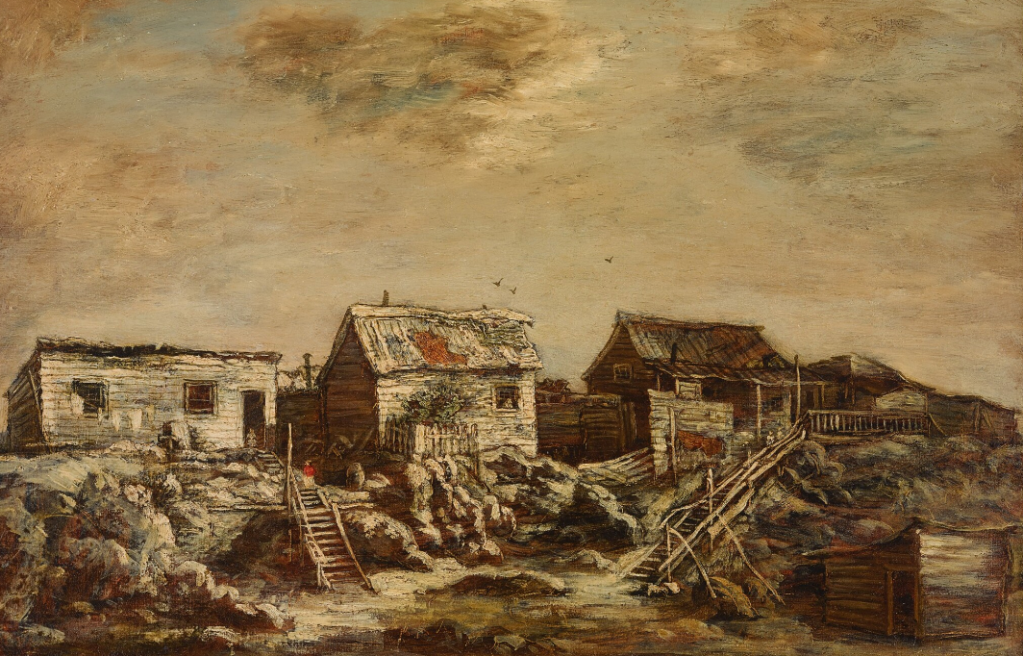In the decades after the Civil War, New Yorkers with money had several options for housing.

For the really loaded, there were stand-alone mansions and the new luxury residential hotels; upper middle class residents could go with a brownstone row house or one of the early “French flats” apartment buildings.
If you were working class or poor, however, a tenement awaited you. And if you were so broke you couldn’t afford (or were excluded from) a tenement, you could cobble together a shack—housing so primitive that it’s hard to believe existed across Manhattan.
Photos of some of these ramshackle houses exist, like these images of wood shanties on a pre-luxury Riverside Drive. But most of the photos only date back to the 1890s.
Yet thanks to some talented but unheralded landscape painters, viewers can get a visceral sense of the substandard wood shacks some residents called home in the 1860s and 1870s.
Ralph Blakelock is one of these landscape painters. Born on Christopher Street in 1847 and the son of a doctor, Blakelock dropped out of the precursor to today’s City College in the 1860s and devoted his life to painting romantic, sometimes darkly evocative moonlit landscapes of New England and the American West, explains Artsy.
Back in Manhattan in 1874—where he tried to support a wife and nine children with the meager proceeds from his art while slipping into the throes of mental illness—Blakelock depicted these wood shacks (top image) in a painting he titled simply “Shanties in Harlem.”
Harlem at the time was transforming from a rural district into a place for the middle class, but the hardscrabble shacks in Blakelock’s painting are startling.
Blakelock also painted “Shanties, Seventh Avenue and 55th Street” (second image). These shacks would have stood four blocks below the new Central Park, and area fast becoming a wealthy enclave of mansions and early apartment houses.
An earlier work from 1868 shows a lonely small wood house with a sloping roof at Fifth Avenue and 89th Street, today the site of the Guggenheim Museum (third image).
Another landscape painter, Howard Nesmith, born in 1859, captured the shacks that once stood on today’s Second Avenue and East 72nd Street. Nesmith painted this image (fourth from top) in 1879, showing hilly terrain and rough-hewn homes.
Nesmith’s “East Foot of 72nd Street,” from 1876, is something of an impressionist view of a wood house perched precariously on the side of a hill by the East River (fifth image).
What became of these shacks and shanties? By the early 1900s, they had all likely disappeared, replaced by brick and mortar residences and office buildings. I wish I knew what drew Blakelock and Nesmith to them.
[Top image: MuturalArt; second image: Sotheby’s; fourth image: MCNY, MNY33853; fifth image: MutualArt]





